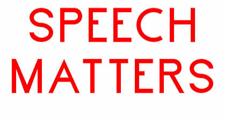
Speech Matters
Mousse is delighted to team up with the Danish Pavilion at the 54th Venice Biennale.
Mousse has created the visual identity for the exhibition SPEECH MATTERS,
and will publish the accompanying catalogue, out during the professional preview of the Biennale.
Agency (International, Est. 1992)
Ayreen Anastas & Rene Gabri (Palestine & Iran)
Robert Crumb (USA, 1943)
Stelios Faitakis (Greece, 1976)
FOS (Denmark, 1971)
Sharon Hayes (USA, 1970)
Han Hoogerbrugge (the Netherlands, 1963)
Mikhail Karikis (Greece, 1975)
Thomas Kilpper (Germany, 1956)
Runo Lagomarsino (Argentina/Sweden, 1977)
Tala Madani (Iran, 1981)
Wendelien van Oldenborgh (the Netherlands, 1962)
Lilibeth Cuenca Rasmussen (Denmark, 1970)
Taryn Simon (USA, 1975)
Jan Švankmajer (Czech Republic, 1934)
Johannes af Tavsheden
Tilman Wendland (Germany, 1969)
Zhang Dali (China, 1963)
curated by Katerina Gregos
The exhibition at the Danish Pavilion aims to provoke a considered debate and to complicate
the issue of freedom of speech. The issue seems to be increasingly used as an empty political
slogan, and is often subjected to a very simplified, biased and populist debate.
In reality, it is an extremely complex and often ambivalent issue that is contingent on
subjective political, social, cultural, religious, and personal views. The discussion around
free speech is therefore highly relative and open. This exhibition aims to highlight some of the intricacies, ambiguities and grey areas inherent to the subject, emphasising the fact that
free speech cannot be exercised or applied in any programmatic or strictly prescribed manner,
and its boundaries cannot be easily delimited.(…)
What do we mean by freedom of speech today? As George Orwell put it, in an essay entitled
The Freedom of the Press, “Is every opinion, however unpopular – however foolish,
even – entitled to a hearing?” Most advocates of freedom of speech acknowledge the need for certain limits, but what are those limits and who decides on them? Freedom of expression and speech are often curbed for fear of offending public decency – but, again, who decides what constitutes the common, hypothetically shared sense of public decency?
What is the line separating criticism of a belief system and speech that is offensive or hurtful?
(From the curatorial statement by Katerina Gregos)
www.danish-pavilion.com
www.moussepublishing.com
www.moussemagazine.it


